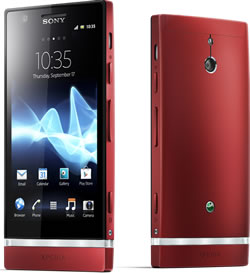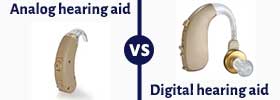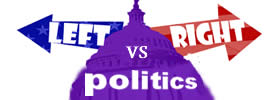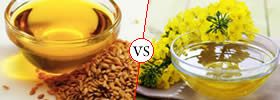Difference between Sony Xperia P and Nokia Lumia 720
Key difference: Sony Xperia P features a 4-inch TFT touch screen that allows up to 4-touch capabilities. The screen is scratch resistant and has a shatter proof coating. The touch screen provides approximately 275 ppi pixel density along with WhiteMagic technology, which adds an extra white pixel with the already present red, blue and green. The Nokia Lumia 720 is one of the newest phones that are similar to its flagship Lumia 920. The Lumia 720 comes with 1 GHz dual-core Snapdragon S4 processor with 512 MB RAM and 8 GB internal storage space that is upgradeable to 64 GB. The phone is available with a 6.7 MP primary camera with Carl Zeiss optics, autofocus and LED flash. It also has a 1.3 MP secondary camera with a resolution of 1280 x 960.
 Sony is a prominent technology company and is known best for its electronics such as phones, TVs, gaming systems, etc. The constant dynamic nature of technology ensures that we always have a better and more forward technology than the one we had a month ago. The price of this dynamic technology is also high, the constant updating of technology requires people have that much cash on hand. However, many companies such as Sony know that not many people have that much cash on hand for disposal, hence has launched mid-range phones such as Xperia P that allows the people to experience the best of both worlds: technology and affordable pricing. The Xperia P was launched in May 2012 and continues to be a major player in the market.
Sony is a prominent technology company and is known best for its electronics such as phones, TVs, gaming systems, etc. The constant dynamic nature of technology ensures that we always have a better and more forward technology than the one we had a month ago. The price of this dynamic technology is also high, the constant updating of technology requires people have that much cash on hand. However, many companies such as Sony know that not many people have that much cash on hand for disposal, hence has launched mid-range phones such as Xperia P that allows the people to experience the best of both worlds: technology and affordable pricing. The Xperia P was launched in May 2012 and continues to be a major player in the market.
Sony Xperia P features a 4-inch TFT touch screen that allows up to 4-touch capabilities. The screen is scratch resistant and has a shatter proof coating, allowing the screen to endure minor scratches and everyday scuffs without sacrificing on the quality. The touch screen provides approximately 275 ppi pixel density, though not the best ppi compared to the heavy contenders but the quality of the screen is not sacrificed. This is mostly because of the company’s WhiteMagic technology, which adds an extra white pixel with the already present red, blue and green. The extra pixel generates a higher level of brightness that does not cloud the phone when using it under direct sunlight.
The phone is a little bulky in nature, but it is easy to become accustomed to when holding it for longer periods of time. The phone is also a little heavier compared to similar phones, but again not something that lets the user forget of the other great features of the phone. The phone is encased in a plastic chassis, which is quite smooth to hold but is also prone to many visible scratches and chips. The device has a clear plastic border on the front that also doubles as a cover up for the antenna. Above the plastic border reside the Home button, back button and Menu button. The power button, the volume rocker and the physical camera button is on the right side of the device, while the left sides hosts a variety of ports including the SIM card slot.
Under the hood, the device is powered by 1 GHz Dual-core processor and hosts the company’s Timescape UI. The user interface is quite smooth and does not glitch when shifting between the screens and the apps. The device runs on 1 GB RAM and comes with an internal storage capacity of 16 GB. Of the 16 GB, only 13 GB is available to the user and it is not expandable. The device houses an 8 MP Autofocus rear camera and a VGA (0.3 MP) front camera, which is a little bit of a letdown. The Exmor R technology ensures that the rear camera provides sharp, clear images, while the front camera does not live up to the same quality. Though initially powered by Android v2.3, the device is now available with Android v4.0, which no status as of yet for v4.1 upgrades. The phone also comes with additional features such as Motion gaming, MobiSystems’ OfficeSuite 5, Wi-Fi hotspot, DLNA, USB On-the-go, Native USB tethering and NFC capabilities. The Xperia P houses a non-removable 1305 mAh battery, which provides a decent battery life and lasts almost a day. With the amount of features that are offered with the phone, the price tag is expected to be quite high; however, the price is quite affordable and will not make that much of a dent in the user’s pocket.
 Nokia is a popular Finnish phone company and has been previously known for durability and increased battery life of phones. When it entered the smartphone market, it teamed up with Microsoft Windows for mobile and has been launching phones with their OS. The Nokia Lumia 720 is one of the newest phones that are similar to its flagship Lumia 920. The little brother is quite similar in looks and many features, lacking only the strikingly high price tag. Nokia has recently announced a number of low- to mid-range phones to try and capture the masses. The phone is being touted as one of the best phones for its price range. The phone sports a 4.3-inch IPS LCD capacitive touch screen, with approximately 217 ppi, which is a decent enough screen resolution. The phone comes with the standard Live Tiles format from the Windows 8.
Nokia is a popular Finnish phone company and has been previously known for durability and increased battery life of phones. When it entered the smartphone market, it teamed up with Microsoft Windows for mobile and has been launching phones with their OS. The Nokia Lumia 720 is one of the newest phones that are similar to its flagship Lumia 920. The little brother is quite similar in looks and many features, lacking only the strikingly high price tag. Nokia has recently announced a number of low- to mid-range phones to try and capture the masses. The phone is being touted as one of the best phones for its price range. The phone sports a 4.3-inch IPS LCD capacitive touch screen, with approximately 217 ppi, which is a decent enough screen resolution. The phone comes with the standard Live Tiles format from the Windows 8.
The Lumia 720 comes with 1 GHz dual-core Snapdragon S4 processor with 512 MB RAM and 8 GB internal storage space that is upgradeable to 64 GB. It also offers Corning Gorilla Glass 2 for protection purposes. The phone is available with a 6.7 MP primary camera with Carl Zeiss optics, autofocus and LED flash. It also has a 1.3 MP secondary camera with a resolution of 1280 x 960. The company offers many camera features such as touch focus, landscape orientation, auto and manual exposure, auto and manual white balance, still image editor, full screen viewfinder, Cinemagraph lens, Bing vision, Smart Shoot lens and panorama lens. The Smart Shoot lens allows the users to merge two different photos to create a perfect shot, which comes handy, if you don’t like having to tell people pose in front of the camera. The phone is slick and thin bar phone with slightly curved edges. The phone sports a 3.5mm jack on the top, with camera button, volume button and the sleep/wake button on the right hand side. The back also three tiny holes for a Wireless Charging cover, which fits on the back of the device. The phone is customizable with changing shells, making it easier to mix and match the phone with various different colors. The phone has been announced for the Australian market, with launch dates yet to be released for the rest of the world.
The information for the detailed table about the two phones has been taken from Sony Mobile website, expertreviews.co.uk, Nokia website, techradar.com and GSMArena.com.
|
|
Sony Xperia P |
Nokia Lumia 720 |
|
Launch Date |
May 2012 |
April 2013 |
|
Company |
Sony |
Nokia |
|
Size |
122 x 59.5 x 10.5 mm |
127.9 x 67.5 x 9 mm |
|
Display |
4-inch scratch-resistant TFT touchscreen |
4.3” IPS LCD capacitive touchscreen |
|
Screen |
960 x 540 pixels (~275 ppi pixel density), 16 million colors |
480 x 800 pixels (~217 ppi pixel density) |
|
Protection |
Scratch-resistant, shatter proof sheet on mineral glass |
Corning Gorilla Glass 2 |
|
Weight |
120 grams |
128 grams |
|
2G Network |
GSM GPRS/EDGE 850, 900, 1800, 1900 |
GSM 850 / 900 / 1800 / 1900 |
|
3G Network |
UMTS HSPA 850, 900, 1900, 2100 |
HSDPA 850 / 900 / 1900 / 2100 |
|
4G Network |
N/A |
N/A |
|
GUI |
Timescape UI |
Windows Phone 8 |
|
CPU speed |
1 GHz Dual core processor |
1 GHz Dual-core Snapdragon S4 processor. |
|
GPU |
Adreno 205 |
Adreno 305 |
|
OS |
Android OS, v2.3 (Gingerbread), v4.0 (Ice Cream Sandwich), planned upgrade to v4.1 (Jelly Bean) |
Microsoft Windows Phone OS 8 |
|
Chipset |
NovaThor U8500 |
Qualcomm MSM8227 |
|
RAM |
1GB |
512 MB |
|
SIM Size |
microSIM |
Micro-SIM |
|
Internal Memory |
16 GB (13 GB accessible to the user) |
8 GB |
|
Expandable Memory |
N/A |
Up to 64 GB |
|
Sensors |
Accelerometer, Proximity sensor, Ambient light sensor, Magnetometer and Gyroscope |
Orientation sensor, high brightness mode, sunlight readability enhancements, Ambient light sensor, accelerometer, proximity, compass |
|
Connectivity |
USB High speed 2.0 and Micro USB support, WiFi and WiFi Hotspot functionality, HDMI Support, DLNA Certified, Synchronisation via Exchange ActiveSync, Google Sync and Facebook, aGPS, WebKit web browser with Pan & zoom, Bluetooth technology, Native USB tethering and NFC. |
GSM, HSDPA, micro-USB, Bluetooth, Wi-Fi, NFC. |
|
Data |
GPRS, EDGE, WLAN, Bluetooth, NFC, USB. |
GPRS, EDGE, WLAN, Bluetooth, NFC and USB. |
|
Speed |
GSM GPRS Up to 100 kbps; GSM EDGE Up to 296 kbps; UMTS HSPA cat 6 (upload) Up to 5.6 Mbps; UMTS HSPA cat 10(download) Up to 14.4 Mbps |
HSDPA, 21.1 Mbps; HSUPA, 5.76 Mbps |
|
WLAN |
Wi-Fi 802.11 b/g/n, Wi-Fi hotspot, DLNA |
Wi-Fi 802.11 a/b/g/n, dual-band; Wi-Fi hotspot |
|
Bluetooth |
Bluetooth v2.1 with A2DP, EDR |
Bluetooth v3.0 with A2DP |
|
USB |
microUSB v2.0, USB On-the-go |
microUSB v2.0 |
|
Primary Camera |
8 MP 3264x2448 pixels rear camera |
6.7 MP Auto focus with two-stage capture key camera |
|
Secondary Camera |
VGA front camera |
1.3 MP 1280 x 960 pixels camera. |
|
Video |
HD video recording (1080p) |
720p@30fps |
|
Camera Features |
|
|
|
Sound Enhancement |
xLOUD Experience Clear bass and clear stereo |
No |
|
Audio supported formats |
MP3, 3GPP, MP4, SMF, WAV, OTA, Ogg vorbis |
ASF, MP4, AAC, AMR, MP3, M4A, WMA, 3GP, 3G2 |
|
Video supported formats |
3GPP, MP4 |
MP4, ASF, WMV, AVI, 3GP, 3G2, M4V, MOV |
|
Battery Capacity |
Non-removable Li-Ion 1305 mAh battery |
Non-removable Li-Ion 2000 mAh battery |
|
Talk time |
2G: 6 hours 3G: 5 hours |
2G: 23.4 hours 3G: 13.4 hours |
|
Stand-by |
2G: 470 hours 3G: 475 hours |
3G: 520 hours |
|
Available Colors |
Black, Silver, Red |
White, Red, Yellow, Cyan, Black |
|
Messaging |
SMS (threaded view), MMS, Email, IM, Push Email |
SMS (threaded view), MMS, Email, Push Email, IM |
|
Browser |
HTML5, Adobe Flash |
HTML5 |
|
Radio |
FM Radio with RDS |
Internet Radio |
|
GPS |
GPS with A-GPS support |
Yes, with A-GPS support and GLONASS |
|
Java |
Java via Java MIDP emulator |
No |
|
Additional Features |
|
|
Image Courtesy: sonymobile.com, nokia.com









Add new comment